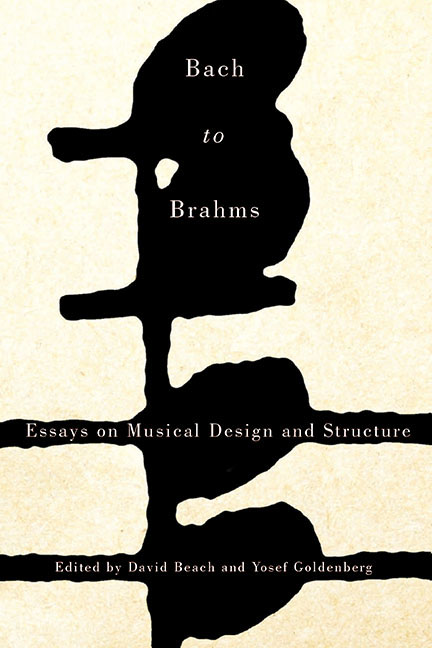Book contents
- Frontmatter
- Dedication
- Contents
- Introduction
- Part One Structure and Design
- Part Two Focus on Motive
- 5 Chopin as an Interpreter of Mozart: The Variations Opus 2 and Don Giovanni
- 6 The First Movement of Brahms's Fourth Symphony Revisited: A Study of the Fanfare and the “Cloud of Mystery”
- 7 “Capricious Play”: Veiled Cyclic Relations in Brahms's Ballades Op. 10 and Fantasies Op. 116
- 8 Chopin's Study in Syncopation
- 9 A Sharp Practice, A Natural Alternative: The Transition into the Recapitulation in the First Movement of Beethoven's “Hammerklavier” Sonata
- 10 Ernst Oster's Vision of Hidden Repetitions and Motivic Enlargements in J. S. Bach's Short Keyboard Works
- Part Three Structure and Design II
- List of Contributors
- Index
6 - The First Movement of Brahms's Fourth Symphony Revisited: A Study of the Fanfare and the “Cloud of Mystery”
from Part Two - Focus on Motive
Published online by Cambridge University Press: 14 March 2018
- Frontmatter
- Dedication
- Contents
- Introduction
- Part One Structure and Design
- Part Two Focus on Motive
- 5 Chopin as an Interpreter of Mozart: The Variations Opus 2 and Don Giovanni
- 6 The First Movement of Brahms's Fourth Symphony Revisited: A Study of the Fanfare and the “Cloud of Mystery”
- 7 “Capricious Play”: Veiled Cyclic Relations in Brahms's Ballades Op. 10 and Fantasies Op. 116
- 8 Chopin's Study in Syncopation
- 9 A Sharp Practice, A Natural Alternative: The Transition into the Recapitulation in the First Movement of Beethoven's “Hammerklavier” Sonata
- 10 Ernst Oster's Vision of Hidden Repetitions and Motivic Enlargements in J. S. Bach's Short Keyboard Works
- Part Three Structure and Design II
- List of Contributors
- Index
Summary
The first movement of Brahms's Fourth Symphony is famous for its thematic economy, yet, it also includes striking diversity, especially noticeable in materials that do not coincide with a normative “second theme.” This study focuses on two such interrelated ideas: the fanfare (first instance, mm. 53–57) and what Donald Francis Tovey calls a “cloud of mystery” (first instance, mm. 107–10).
The Fanfare
Measures 53–57 introduce new thematic material with clear topical content—a fanfare, perhaps with hunt or military associations (see ex. 6.1). Hugo Riemann stated the obvious when he wrote that the new material “contrasts strongly with the first theme and shows its aggressive, self-possessed character.” Thematically, this is the most sharply contrasting idea in the entire movement. Whereas the opening theme of the symphony is played legato (piano) with the main melody in the violins, the fanfare is played with sharp articulation (forte), by the winds (without the flutes, with two horns). Furthermore, while the main theme contains a single melodic cell (descending thirds or their inversion) throughout its first eight measures and a single rhythmic pattern of only two rhythmic values in simple ratio, the fanfare combines varied elements in four measures only. Melodically, both an arpeggio and an upper neighbor appear: D, the upper neighbor of C♯, is not approached directly, but rather arrives from an inner voice through the conspicuous interval of a diminished fourth. Since the D does not receive a harmonization of its own, an implied augmented triad emerges. Rhythmically, the four measures include three distinct elements: the kernel fanfare, based on uneven rhythmic values; a more basic dotted rhythm; and equal quarter-note triplets. Not only is each of these elements later treated separately, the passage also lends itself to more than one segmentation. Since the tutti is left off after the first beat, the passage sounds as though it begins with the two-sixteenth-note upbeat. The orchestral reentry (without trumpets and timpani) occurs on the upbeat to the dotted quarter note, but the immediate imitation replicates the shorter motive from after the dotted quarter note.
- Type
- Chapter
- Information
- Bach to BrahmsEssays on Musical Design and Structure, pp. 97 - 114Publisher: Boydell & BrewerPrint publication year: 2015

